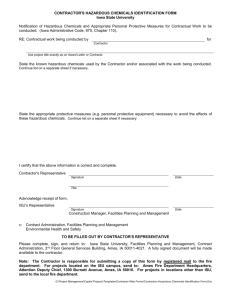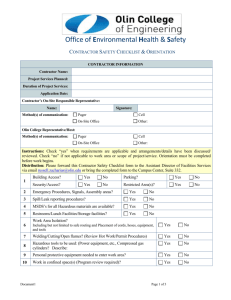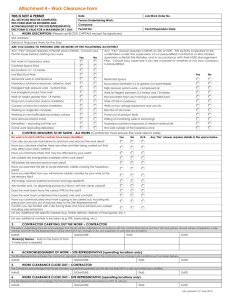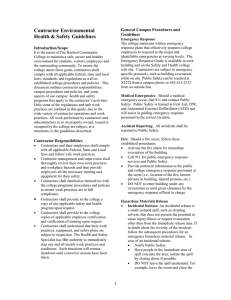Construction and Demolition Waste Session Notes – AFE 2012
advertisement
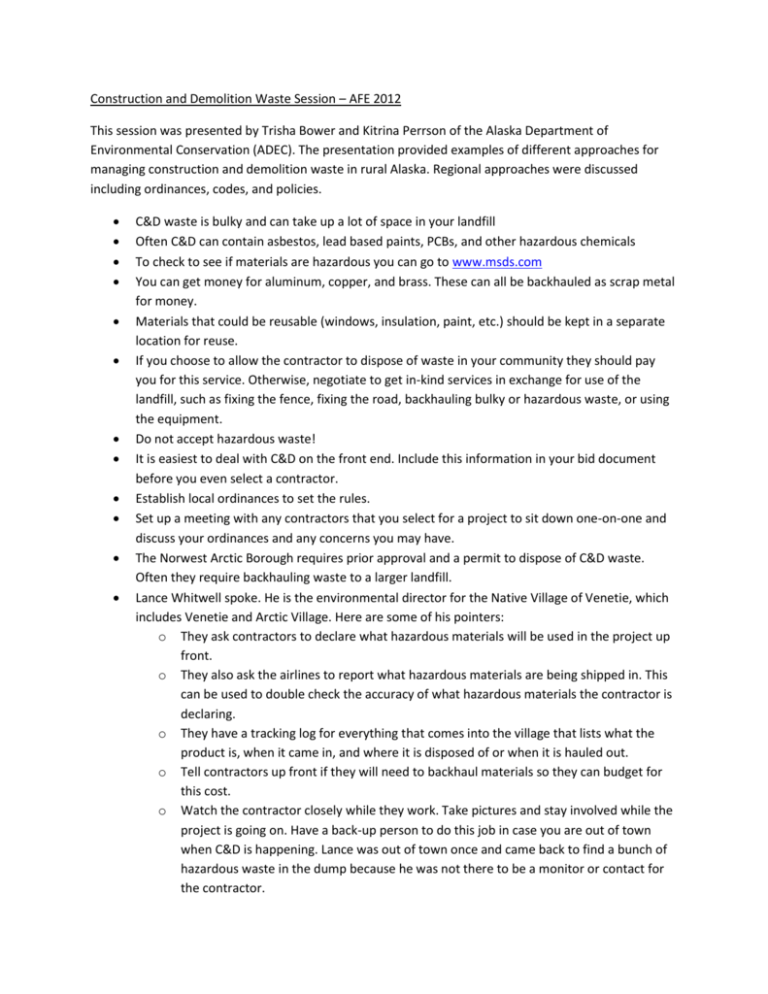
Construction and Demolition Waste Session – AFE 2012 This session was presented by Trisha Bower and Kitrina Perrson of the Alaska Department of Environmental Conservation (ADEC). The presentation provided examples of different approaches for managing construction and demolition waste in rural Alaska. Regional approaches were discussed including ordinances, codes, and policies. C&D waste is bulky and can take up a lot of space in your landfill Often C&D can contain asbestos, lead based paints, PCBs, and other hazardous chemicals To check to see if materials are hazardous you can go to www.msds.com You can get money for aluminum, copper, and brass. These can all be backhauled as scrap metal for money. Materials that could be reusable (windows, insulation, paint, etc.) should be kept in a separate location for reuse. If you choose to allow the contractor to dispose of waste in your community they should pay you for this service. Otherwise, negotiate to get in-kind services in exchange for use of the landfill, such as fixing the fence, fixing the road, backhauling bulky or hazardous waste, or using the equipment. Do not accept hazardous waste! It is easiest to deal with C&D on the front end. Include this information in your bid document before you even select a contractor. Establish local ordinances to set the rules. Set up a meeting with any contractors that you select for a project to sit down one-on-one and discuss your ordinances and any concerns you may have. The Norwest Arctic Borough requires prior approval and a permit to dispose of C&D waste. Often they require backhauling waste to a larger landfill. Lance Whitwell spoke. He is the environmental director for the Native Village of Venetie, which includes Venetie and Arctic Village. Here are some of his pointers: o They ask contractors to declare what hazardous materials will be used in the project up front. o They also ask the airlines to report what hazardous materials are being shipped in. This can be used to double check the accuracy of what hazardous materials the contractor is declaring. o They have a tracking log for everything that comes into the village that lists what the product is, when it came in, and where it is disposed of or when it is hauled out. o Tell contractors up front if they will need to backhaul materials so they can budget for this cost. o Watch the contractor closely while they work. Take pictures and stay involved while the project is going on. Have a back-up person to do this job in case you are out of town when C&D is happening. Lance was out of town once and came back to find a bunch of hazardous waste in the dump because he was not there to be a monitor or contact for the contractor. o o Make sure you explain all the options of disposal to the contractor so nothing ends up thrown into the ditch because they didn’t know what to do with it. Note: For more information on addressing construction and demolition wastes, including sample ordinances, see http://www.zendergroup.org/construction.html


